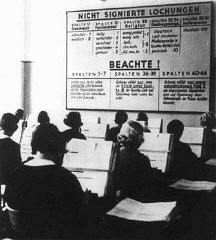You searched for: 股权直销公排商城快速搭建【TG���������@EK7676】平台包网搭建股权直销公排商城快速搭建【TG���������@EK7676】平台包网搭建3SgZtqEwVd
<< Previous | Displaying results 31-40 of 274 for "股权直销公排商城快速搭建【TG���������@EK7676】平台包网搭建股权直销公排商城快速搭建【TG���������@EK7676】平台包网搭建3SgZtqEwVd" | Next >>
-
Jesse Owens and other Olympic athletes compete
PhotoAmerican Olympic runner Jesse Owens and other Olympic athletes compete in the twelfth heat of the first trial of the 100m dash. Berlin, Germany, August 3, 1936.
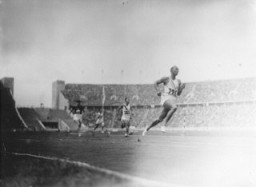
-
Passport stamped with "J" for "Jude"
PhotoPassport issued to Lore Oppenheimer, a German Jew, with "J" for "Jude" stamped on the card. "Sara" was added to the names of all German Jewish women. Hildesheim, Germany, July 3, 1939.
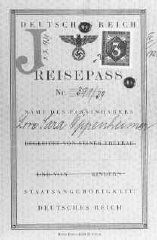
-
German troops march into the town square of Friedland
PhotoIn the aftermath of the Munich agreement, which turned the Sudetenland area of Czechoslovakia over to Germany, German troops march into the town square of Friedland. October 3, 1938.
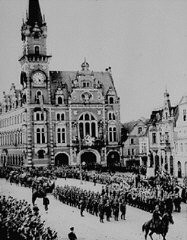
-
A Norwegian town burns after a German bombing mission
PhotoThe Norwegian town of Elverum, near the Swedish border, burns after a German bombing mission during the invasion of Norway. Elverum, Norway, May 3, 1940.
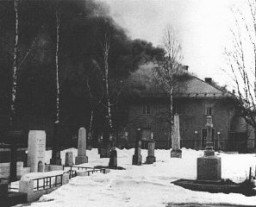
-
Building damaged following the German invasion of Norway
PhotoThis building in the town of Elverum, near Oslo, was damaged during a bombing raid following the German invasion of Norway. Elverum, Norway, May 3, 1940.
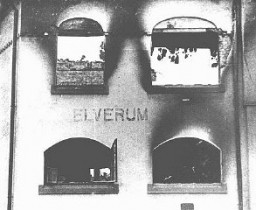
-
Arriving in New York
PhotoA group of German and Austrian Jewish refugee children arrives in New York on board the SS President Harding. New York, United States, June 3, 1939.

-
Hitler tours the Sudetenland
PhotoHitler during a triumphal tour of the Sudetenland following the Munich agreement of September 1938. The agreement ceded the largely German-speaking Sudeten region of Czechoslovakia to Germany. Eger, Czechoslovakia, October 3, 1938.
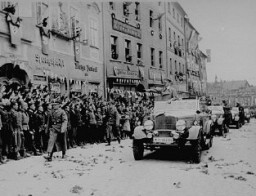
-
Group portrait of former Bielski partisans
PhotoGroup portrait of former Bielski partisans from Nowogrodek taken in the Foehrenwald displaced persons camp. Germany, April 3, 1948.
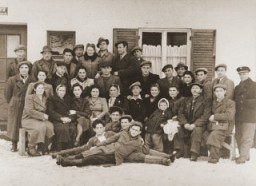
-
Refugees aboard the St. Louis
PhotoRefugees aboard the St. Louis wait to hear whether Cuba will grant them entry. Off the coast of Havana, Cuba, June 3, 1939.
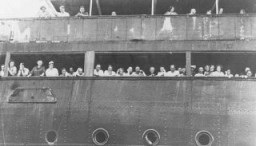
-
German women at work in the offices of the German Census Bureau
PhotoGerman women at work in the offices of the German Census Bureau. The board gives directions for tabulation: the center column instructs that number 3 is the indicator to be used for Jews. Germany, 1933.
